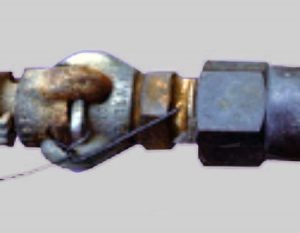 There are several dangers associated with the use of air tools. First and foremost is the danger of getting hit by one of the tool’s attachments or by some kind of fastener that you are using with the tool.
There are several dangers associated with the use of air tools. First and foremost is the danger of getting hit by one of the tool’s attachments or by some kind of fastener that you are using with the tool.
Handling Air Tools Safely:
- Permit only experienced and trained people to operate pneumatic tools.
- Inspect each tool before connecting it to the air supply: o Check tool safety mechanisms if applicable.
- Tighten all screws and cylinder caps securely.
- Check for correct air supply and pressure before connecting a tool.
- Check that the tool is correctly and securely connected to the air supply hose, in good working order, and has a fully operating safety mechanism before using.
- Equip tools with a work-contacting element that limits the contact area to one that is as small as practical.
- Make sure that the mechanical linkage between work-contacting element and trigger is enclosed.
- Review the manufacturer’s instruction before using a tool.
- Wear safety glasses or goggles, or a face shield (with safety glasses or goggles), and, where necessary, safety shoes or boots, and hearing protection.
- Post warning signs where pneumatic tools are used. Set up screens or shields in areas where nearby workers may be exposed to flying fragments, chips, dust, and excessive noise.
- Ensure that the compressed air supplied to the tool is clean and dry.
- Dust, moisture, and corrosive fumes can damage a tool.
- An in-line regulator filter and lubricator increase tool life.
- Keep tools clean and lubricated and maintain them according to the manufacturers’ instructions.
- Use only the attachments that the manufacturer recommends for the tools you are using.
STAY ALERT – DON’T GET HURT!!
Download flyer: STOTW_730_Safety with Air Tools Download Spanish flyer: STOTW_730_Safety with Air Tools_esp

